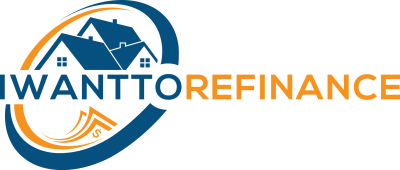Financial challenges can arise unexpectedly, leaving individuals struggling to make timely payments on loans, mortgages, and other debts.
Late payments can lead to a downward spiral, culminating in the need for bankruptcy or loan modification. In this article, we will explore the various options available to those facing financial hardship, including understanding late payments, bankruptcy, and loan modification.
1. Understanding Late Payments:
Late payments can happen to anyone, and they can have a significant impact on credit scores and financial stability. It's important to understand the consequences of late payments, including late fees, interest rate increases, and negative marks on credit reports. Communicating with lenders, negotiating payment plans, and seeking financial counseling can help prevent late payments from snowballing into unmanageable debt.
2. Bankruptcy:
Bankruptcy is a legal process that can provide a fresh start for individuals struggling with overwhelming debt. Filing for bankruptcy can stop creditor harassment, wage garnishments, and foreclosure proceedings. However, it also has significant consequences, including a negative impact on credit scores and the potential loss of assets. It's essential to understand the different types of bankruptcy and consult with a qualified bankruptcy attorney to determine if it's the right option.
3. Loan Modification:
Loan modification is a process that can help individuals facing financial hardship to renegotiate the terms of their loans or mortgages. This can include lowering interest rates, reducing monthly payments, or extending the length of the loan. Loan modification can provide relief for those struggling to make payments, but it requires working with lenders and meeting eligibility criteria. Seeking assistance from a qualified loan modification professional can help individuals navigate this process successfully.
4. Seeking Professional Assistance:
When facing financial challenges, seeking professional assistance can provide valuable guidance and support. This can include working with financial counselors, bankruptcy attorneys, or loan modification professionals. These professionals can provide customized advice based on individual circumstances, helping individuals explore all available options and make informed decisions.
Conclusion:
When faced with financial challenges, it's essential to explore all available options and make informed decisions. Late payments, bankruptcy, and loan modification are three potential paths to address financial hardship, but each option requires careful consideration and assessment of individual circumstances. Seeking professional assistance and maintaining open communication with lenders are crucial components of successfully navigating financial challenges. By understanding the options available and seeking support when needed, individuals can take control of their financial futures and move toward greater financial stability.
ARTICLE 5:
"Understanding Mortgage Forbearance: A Temporary Solution for Financial Hardship"
Introduction:
In times of financial hardship, it can be challenging to keep up with mortgage payments. Fortunately, many lenders offer mortgage forbearance as a temporary solution to help homeowners navigate tough times. In this article, we will explore what mortgage forbearance is, how it works, and what homeowners should consider before entering into a forbearance agreement.
1. What is Mortgage Forbearance?
Mortgage forbearance is an agreement between a homeowner and their lender that temporarily suspends or reduces mortgage payments for a set period. This can provide much-needed financial relief during times of hardship, such as job loss or unexpected medical expenses. However, it's important to note that forbearance does not eliminate mortgage debt or interest charges.
2. How Does Mortgage Forbearance Work?
When a homeowner enters into a forbearance agreement, the lender agrees to suspend or reduce mortgage payments for a set period. The length of the forbearance period varies depending on the lender and the homeowner's circumstances but typically lasts between three to twelve months. During the forbearance period, interest may continue to accrue, and the missed payments will need to be repaid.
3. What Should Homeowners Consider Before Entering into a Forbearance Agreement?
Before entering into a forbearance agreement, homeowners should consider several factors. First, it's essential to understand the terms of the forbearance agreement, including the length of the forbearance period, the amount of payments to be suspended, and the repayment terms. Homeowners should also consider the impact of forbearance on their credit score and the potential consequences if they are unable to repay the missed payments.
4. How to Request Mortgage Forbearance?
To request mortgage forbearance, homeowners should contact their lender and explain their financial hardship. Many lenders have specific forbearance programs and requirements, so it's essential to understand the lender's process and eligibility criteria. Homeowners should be prepared to provide documentation of their financial hardship, such as job loss or medical bills.
Conclusion:
Mortgage forbearance can provide temporary relief for homeowners facing financial hardship. However, it's important to understand the terms of the forbearance agreement, the impact on credit scores, and the potential consequences if the missed payments cannot be repaid. If homeowners are considering forbearance, it's essential to contact their lender, understand the eligibility criteria, and be prepared to provide documentation of their financial hardship. By taking these steps, homeowners can navigate tough times and find a path towards greater financial stability.

